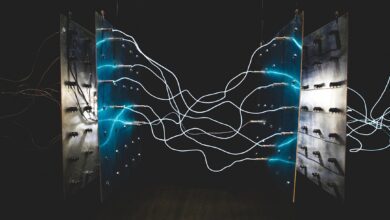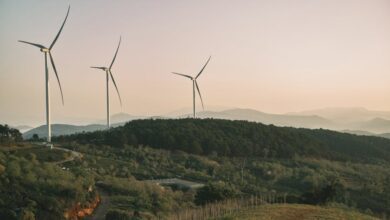Harnessing Hydropower: A Key Player in the Renewable Energy Transition and Global Energy Trends

As the world grapples with the pressing challenges of climate change and the need for sustainable energy solutions, hydropower emerges as a vital player in the global energy transition. Harnessing the power of flowing water to generate electricity, hydropower not only contributes to energy security but also aligns with the broader goals of renewable energy development. This article delves into the multifaceted role of hydropower in reshaping energy markets and policies, particularly as we compare it to traditional fossil fuels and nuclear energy sources. With innovations such as smart grids and advanced energy storage solutions, hydropower stands poised to enhance energy efficiency and bolster green energy production. As we navigate global energy trends, it is essential to understand how hydropower fits within the larger framework of energy innovations, including bioenergy, solar power, and wind energy, to create a more sustainable and resilient energy future. Join us on this exploration of hydropower’s potential to lead the charge in the ongoing evolution of energy economics and investment strategies.
- 1. The Role of Hydropower in the Global Energy Transition: A Renewable Energy Solution
- 2. Comparing Hydropower with Fossil Fuels and Nuclear Energy: A Path to Energy Efficiency
- 3. Innovations in Hydropower: How Smart Grids and Energy Storage Enhance Green Energy Production
1. The Role of Hydropower in the Global Energy Transition: A Renewable Energy Solution
Hydropower plays a pivotal role in the global energy transition, emerging as a key renewable energy solution amid growing concerns over fossil fuels and climate change. As nations strive to reduce greenhouse gas emissions and transition towards cleaner energy sources, hydropower stands out for its efficiency and reliability. It currently accounts for about 16% of global electricity generation, making it the largest source of renewable energy worldwide (International Hydropower Association, 2023).
One of the significant advantages of hydropower is its ability to provide energy storage. Hydropower plants can store potential energy in the form of water in reservoirs, allowing for energy generation during peak demand. This capability enhances energy security and complements other renewable sources like solar power and wind energy, which are intermittent. As energy markets adapt to fluctuating supply and demand, integrating hydropower with smart grids can optimize energy efficiency and distribution.
Moreover, hydropower supports the development of other renewable energies by providing a stable base load of energy that can balance the variable outputs from solar and wind sources. This synergy is crucial for achieving energy transition goals, as it enables a more reliable energy mix. Increased investment in hydropower infrastructure not only stimulates economic growth but also aligns with energy policy objectives aimed at promoting green energy innovations.
In the context of energy economics, hydropower is often considered a cost-effective solution compared to nuclear energy and other thermal energy sources. The low operating costs and long lifespan of hydropower plants make them an attractive investment for both energy imports and exports. As countries seek to diversify their energy portfolios, hydropower can play a significant role in reducing dependence on fossil fuels while supporting overall energy R&D efforts.
Furthermore, with the rise of electric vehicles and the need for sustainable transportation solutions, hydropower can contribute to a cleaner grid, powering electric vehicle charging stations and reducing the carbon footprint of the transportation sector. As global energy trends continue to evolve, the integration of hydropower into the broader energy landscape will be vital in achieving a sustainable energy future.
In summary, hydropower is more than just a renewable energy source; it is a cornerstone of the energy transition, facilitating energy security, efficiency, and innovation while combating climate change. As nations prioritize carbon capture and explore diverse energy solutions, hydropower's role in reshaping the energy landscape will only grow.
References:
International Hydropower Association. (2023). Hydropower status report 2023. Retrieved from [link]
2. Comparing Hydropower with Fossil Fuels and Nuclear Energy: A Path to Energy Efficiency
As the world increasingly focuses on energy efficiency and sustainability, hydropower stands out as a renewable energy source that can effectively compete with fossil fuels and nuclear energy. Unlike fossil fuels, which emit significant greenhouse gases and contribute to climate change, hydropower harnesses the natural flow of water to generate electricity, making it a vital player in the transition to green energy. This renewable energy source not only reduces reliance on carbon-intensive fossil fuels but also plays a crucial role in energy security by diversifying energy markets and reducing energy imports.
When comparing hydropower to nuclear energy, both have their advantages and challenges. Hydropower facilities often have lower operational costs and shorter construction times compared to nuclear plants. Furthermore, hydropower can be more easily integrated with smart grids, allowing for better energy storage and distribution. In contrast, nuclear energy, while providing a stable energy output, faces significant public concerns regarding safety and waste disposal, which can hinder investment and development.
In the context of global energy trends, the push for energy transition emphasizes the importance of integrating various renewable sources like wind energy and solar power alongside hydropower. This diversification enhances energy efficiency and reliability while also allowing for innovative energy storage solutions, such as pumped hydro storage, which can balance intermittent renewable sources.
Moreover, energy policy is shifting to support hydropower and other renewable energies through investments in energy R&D to improve technology and efficiency. This not only aids in achieving climate goals but also opens avenues for energy exports, as countries can leverage their natural water resources to enhance their standing in the global energy markets.
As nations strive to combat climate change and move towards a sustainable future, hydropower's contributions to energy efficiency and security will be crucial. By prioritizing investments in this renewable resource and integrating it with other clean technologies, we can pave the way for a more resilient and sustainable energy landscape that benefits both the environment and the economy.
3. Innovations in Hydropower: How Smart Grids and Energy Storage Enhance Green Energy Production
Innovations in hydropower are playing a crucial role in enhancing green energy production and contributing to the global energy transition. As the world seeks to reduce reliance on fossil fuels and nuclear energy, hydropower stands out as a reliable renewable energy source. Recent advancements in smart grids and energy storage solutions are pivotal in optimizing the efficiency and effectiveness of hydropower systems.
Smart grids represent a significant leap in energy management. By utilizing advanced communication technologies, these grids allow for real-time monitoring and control of energy flows. This capability enables better integration of hydropower with other renewable energy sources, such as solar power and wind energy, ensuring a more resilient and flexible energy system. With the ability to analyze energy consumption patterns, smart grids enhance energy efficiency and facilitate demand response strategies, ultimately leading to reduced energy waste.
Energy storage technologies, such as batteries and pumped hydro storage, complement smart grids by addressing the intermittency of renewable energy sources. Hydropower plants can leverage these storage solutions to store excess energy generated during peak production times and release it when demand surges, thus stabilizing energy markets. This synergy between hydropower, energy storage, and smart grids not only improves energy security but also supports the integration of distributed energy resources, including bioenergy and thermal energy, into the broader energy landscape.
As we witness the evolution of energy policy aimed at combating climate change, investments in hydropower innovations are essential. These investments not only bolster energy R&D but also position hydropower as a critical player in achieving carbon capture and reducing greenhouse gas emissions. By enhancing the efficiency of hydropower systems and facilitating the transition to a more sustainable energy economy, these innovations ultimately support global energy trends toward cleaner and more reliable energy sources, including hydrogen energy and electric vehicles.
In conclusion, the intersection of smart grids and energy storage with hydropower is redefining the landscape of renewable energy. As we move towards a future that prioritizes energy efficiency and sustainability, these innovations will be instrumental in driving the energy transition and ensuring a robust and resilient energy system for generations to come.
In conclusion, hydropower stands out as a vital contributor to the global energy transition, offering a renewable energy solution that not only enhances energy security but also plays a crucial role in combating climate change. As we compare hydropower with traditional fossil fuels and nuclear energy, it becomes evident that hydropower is a pathway to improved energy efficiency and reduced carbon emissions. Innovations such as smart grids and advanced energy storage systems further optimize green energy production, paving the way for a sustainable energy future.
With the ongoing development of energy markets and investments in energy R&D, hydropower is poised to become even more integral to global energy trends. As countries focus on diversifying their energy portfolios with options like bioenergy, solar power, and wind energy, hydropower remains a cornerstone of energy policy aimed at achieving a low-carbon economy. The integration of distributed energy resources, including electric vehicles and hydrogen energy, will also enhance the resilience of energy transportation networks.
As we move forward, it is imperative for stakeholders in the energy sector to prioritize hydropower alongside other renewable sources, ensuring a balanced approach to energy imports and exports. By embracing hydropower and its innovations, we can foster a sustainable future that not only meets our energy needs but also supports the broader goals of energy economics and environmental stewardship. This commitment is essential for a greener, more sustainable energy landscape that benefits all.





